Be the first to review “AI-Driven Sugarcane Diseases Detection & Remedy Suggestion with Flask App Final Year Project” Cancel reply
Sale!
Deep Learnig Project, Machine Learning Project
AI-Driven Sugarcane Diseases Detection & Remedy Suggestion with Flask App Final Year Project
Original price was: ₹2,599.00.₹799.00Current price is: ₹799.00.
The following contents are Downloadable immediately after the successful payment
Source Code
Flask Web App
Dataset
Trained Model
Project Report (Both PDF and Word files)
Instructions to install the necessary Software and Libraries
Step-by-step instructions to execute the project (readme file)
Project Description
Sugarcane (Saccharum officinarum) is a major commercial crop impacted by leaf diseases like Red Rot and Red Rust, causing significant yield loss. Traditional diagnosis is slow and error-prone. This project applies AI—combining deep learning (DenseNet201) and machine learning (SVM)—to automatically detect and classify sugarcane leaf diseases from images. It also integrates actionable remedies with purchase links via a simple web app for farmers, enhancing disease management accessibility.
Dataset Details
- Collected from local sugarcane farms under real farming conditions.
- Total 224 labeled images:
o Healthy: 75
o Red Rot: 74
o Red Rust: 75
Methodology
- Data Augmentation: Enhanced dataset variation through rotation, flipping, zooming, contrast changes.
- Preprocessing: Images resized to 224×224, normalized for DenseNet201 input.
- Feature Extraction: DenseNet201 pretrained on ImageNet extracts 1920-dimensional vectors capturing leaf features.
- Classification: Support Vector Machine with RBF kernel classifies features into Healthy, Red Rot, or Red Rust.
- Training: Combined DenseNet201+SVM trained with stratified 5-fold cross-validation; achieved training accuracy of 98% and validation accuracy of 97.78%.
- Deployment: Flask web app integrates model inference, image upload interface, and remedy suggestions.
System Architecture
- Model Layer: DenseNet201 extracts features, SVM performs classification.
- Backend: Flask handles image upload, inference, and serves results.
- Frontend: HTML templates for image upload and displaying disease prediction with remedies.
- Remedies: Actionable management tips linked to online product purchases.
Installing required Software and Running the Project
Install Anaconda Python
Open Anaconda Prompt, navigate to project folder:
cd path_to_your_project_folder
Example:
C:\>D:
C:\>cd D:\Sugarcane-Leaf-Disease-Detection
Create and activate environment:
conda create -n sdd python=3.9
conda activate sdd
Install dependencies
pip install -r requirements.txt
Train the model (Optional):
jupyter notebook
Open Sugarcane-Leaf-Disease-Detection.ipynb and run all cells.
Launch the Flask web app:
python app.py
Software Requirements
- Operating System: Any OS that supports Python and these packages (Windows 10/11, macOS, Linux)
- Python Version: Python 3.7 to 3.9 (compatible with tensorflow-cpu 2.7.0)
- Python Packages (from requirements.txt):
o TensorFlow CPU version 2.7.0
o numpy 1.21.4
o Pillow 8.4.0 (image processing)
o tqdm 4.61.0 (progress bars)
o scikit-learn 0.24.2 (machine learning)
o matplotlib 3.5.0 (plotting)
o pandas 1.3.5 (data manipulation)
o seaborn 0.11.2 (statistical data visualization)
o scikit-image 0.18.3 (image processing)
o protobuf 3.20.3 (serialization)
o notebook 6.1.5 (Jupyter notebook interface)
o Flask 2.0.3 (web framework)
o Werkzeug 2.0.3 (WSGI utility, used with Flask)
Hardware Requirements
- CPU: A moderately powerful processor, preferably quad-core or higher, as TensorFlow CPU will benefit from multiple cores.
- RAM: At least 8 GB RAM; 16 GB recommended for handling larger datasets or models.
- Storage: HDD / SSD preferred with at least 10 GB free space for packages, data, and intermediate files.
- GPU: Not required (tensorflow-cpu), but if you want GPU acceleration later, an NVIDIA GPU with CUDA support would be needed.
- Display: For visualization (matplotlib, seaborn), a standard display setup is sufficient.
Results & Discussion
- Classification report shows ~94% precision, recall, and F1-score overall.
- Healthy leaves were classified most accurately; some overlap between Red Rot and Red Rust due to symptom similarity.
- Compared to baseline CNN models (78-91% accuracy), DenseNet201+SVM achieved superior generalization.
- Data augmentation was key to performance on small datasets.
- Web app enables real-time use by farmers, bridging diagnosis to action.
Limitations
- Dataset limited to 225 images and three classes.
- Disease coverage excludes some sugarcane diseases (Smut, Mosaic Virus, etc.).
- Remedies currently provided in English only.
- Model robustness yet to be tested extensively under varied real-world conditions.
Future Work
- Expand datasets with diverse regions, more diseases, and severity levels.
- Introduce mobile and IoT-based deployment for field usage.
- Incorporate explainable AI visualization methods for interpretability.
- Develop multilingual user interfaces for wider accessibility.
- Cloud deployment for scalable monitoring and analysis.
Happy Learning
Still need help to set up and execute the project
- Setup and modification are paid services based on requirements.


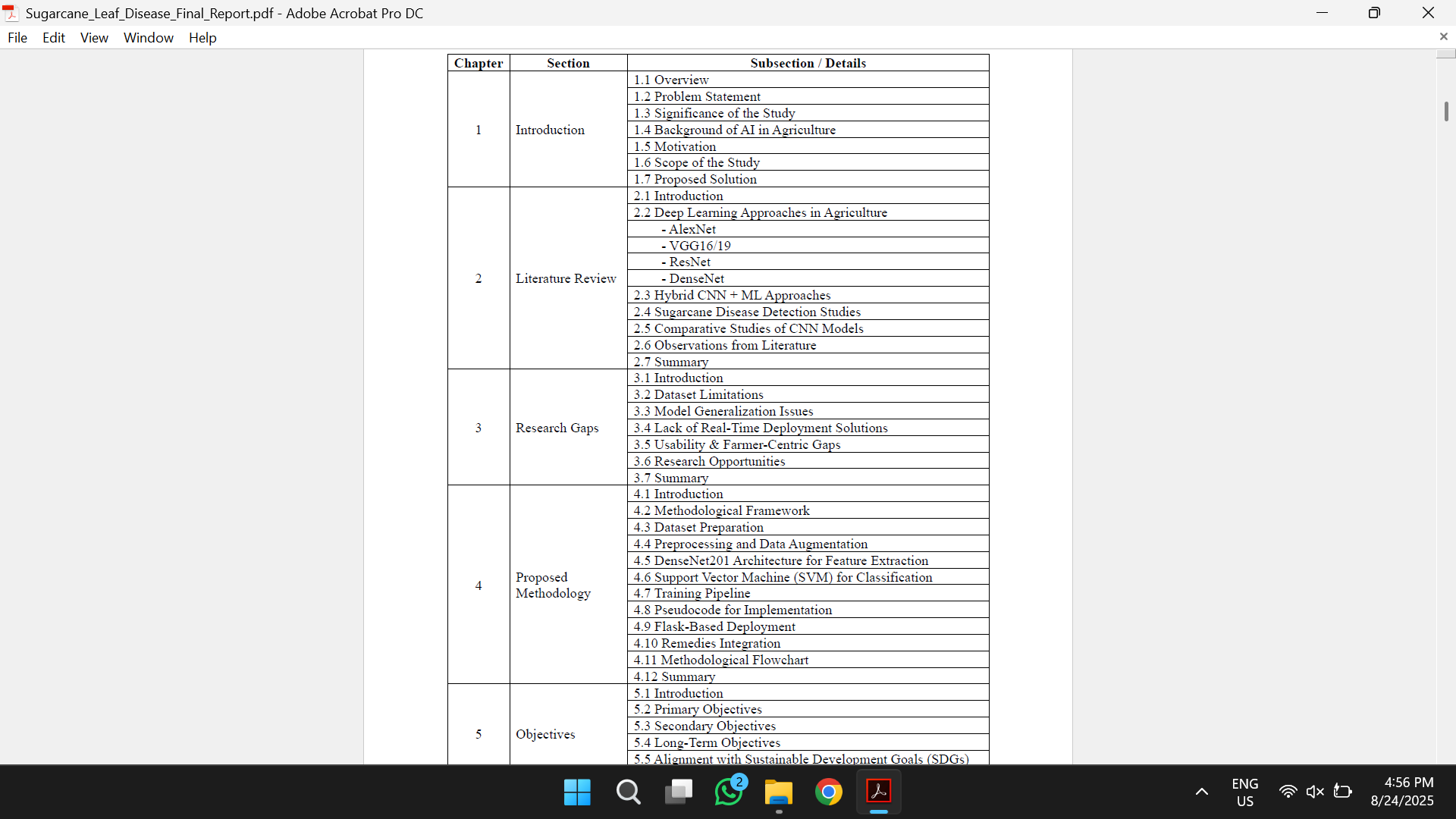
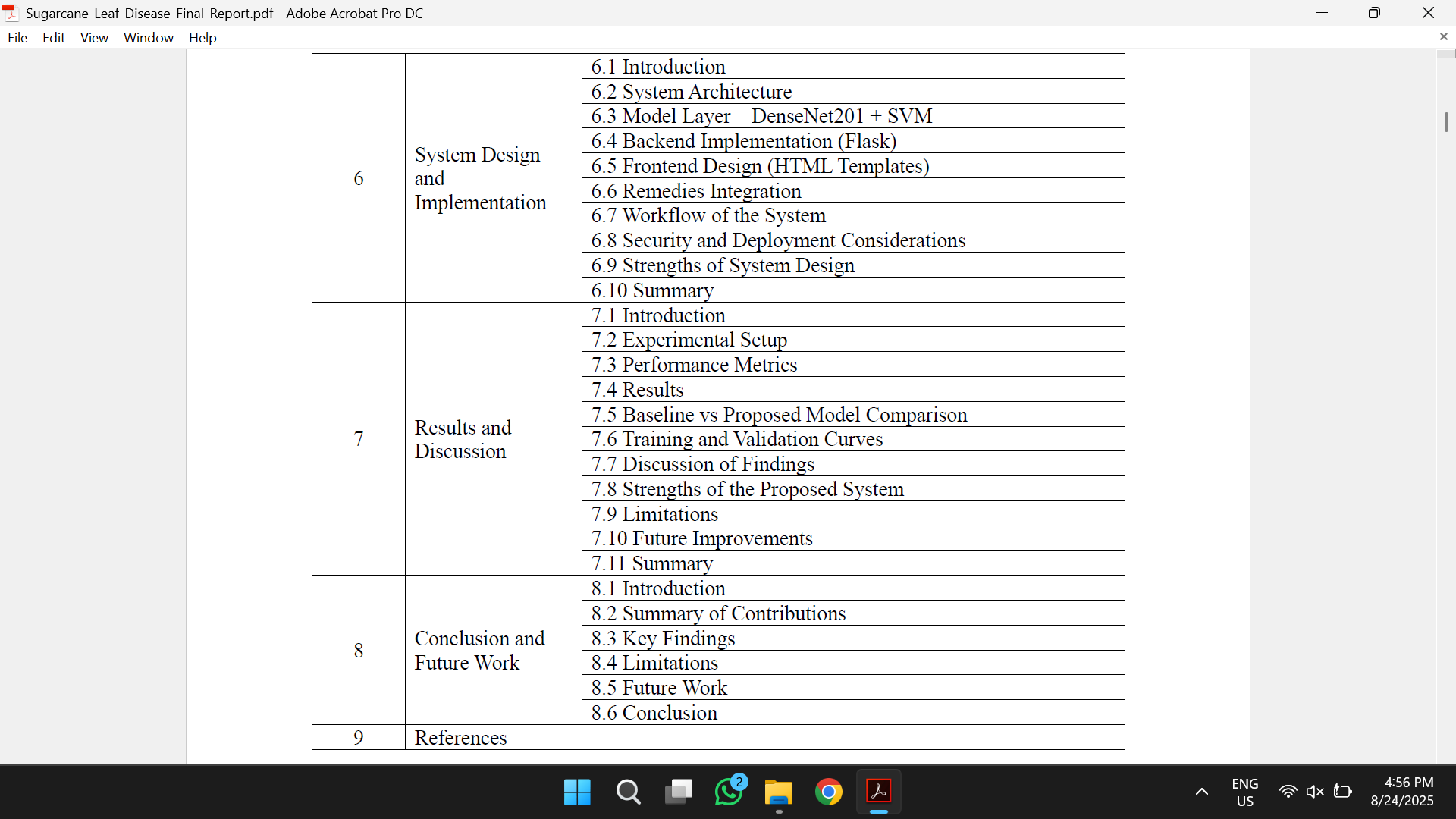
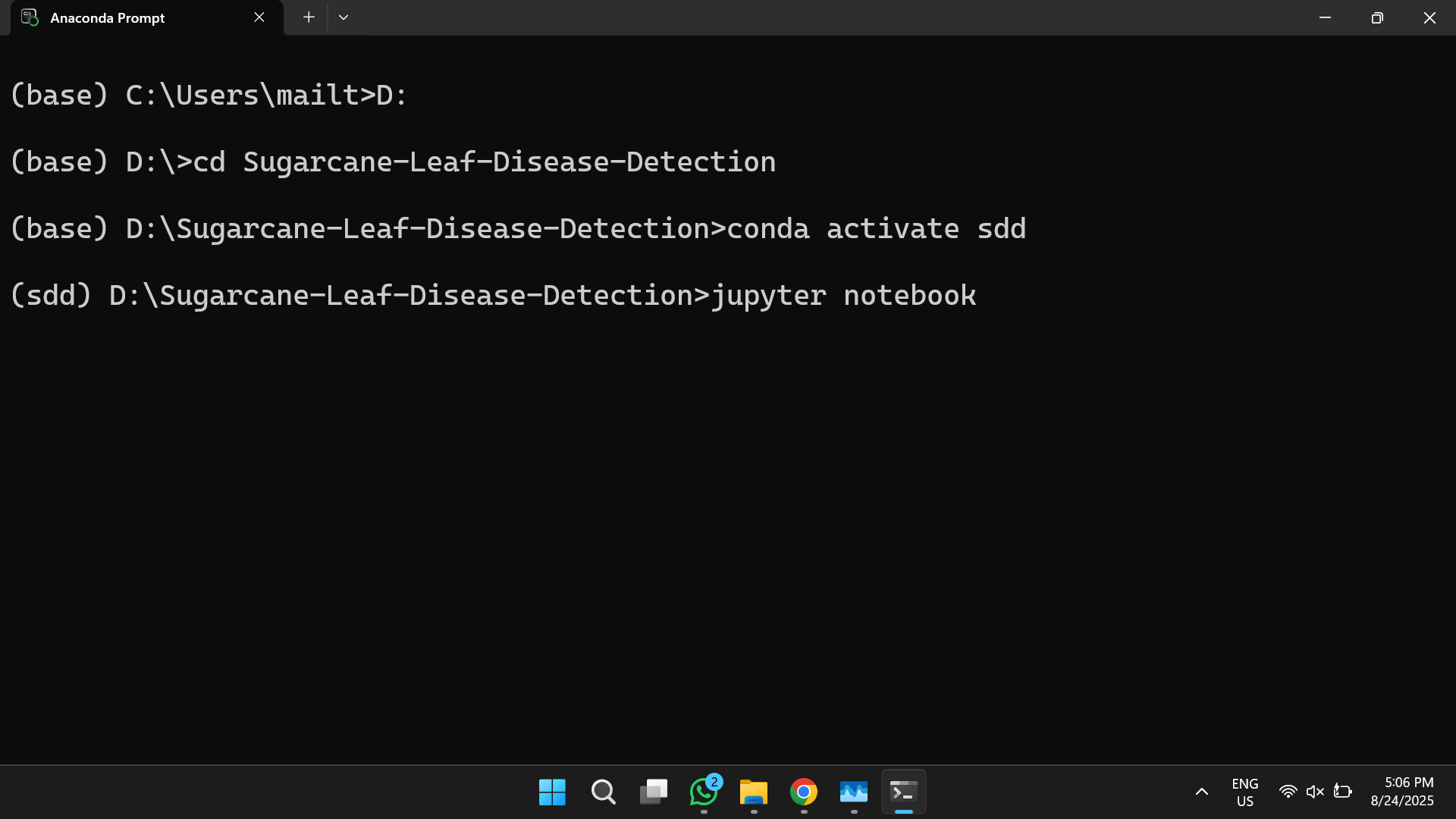
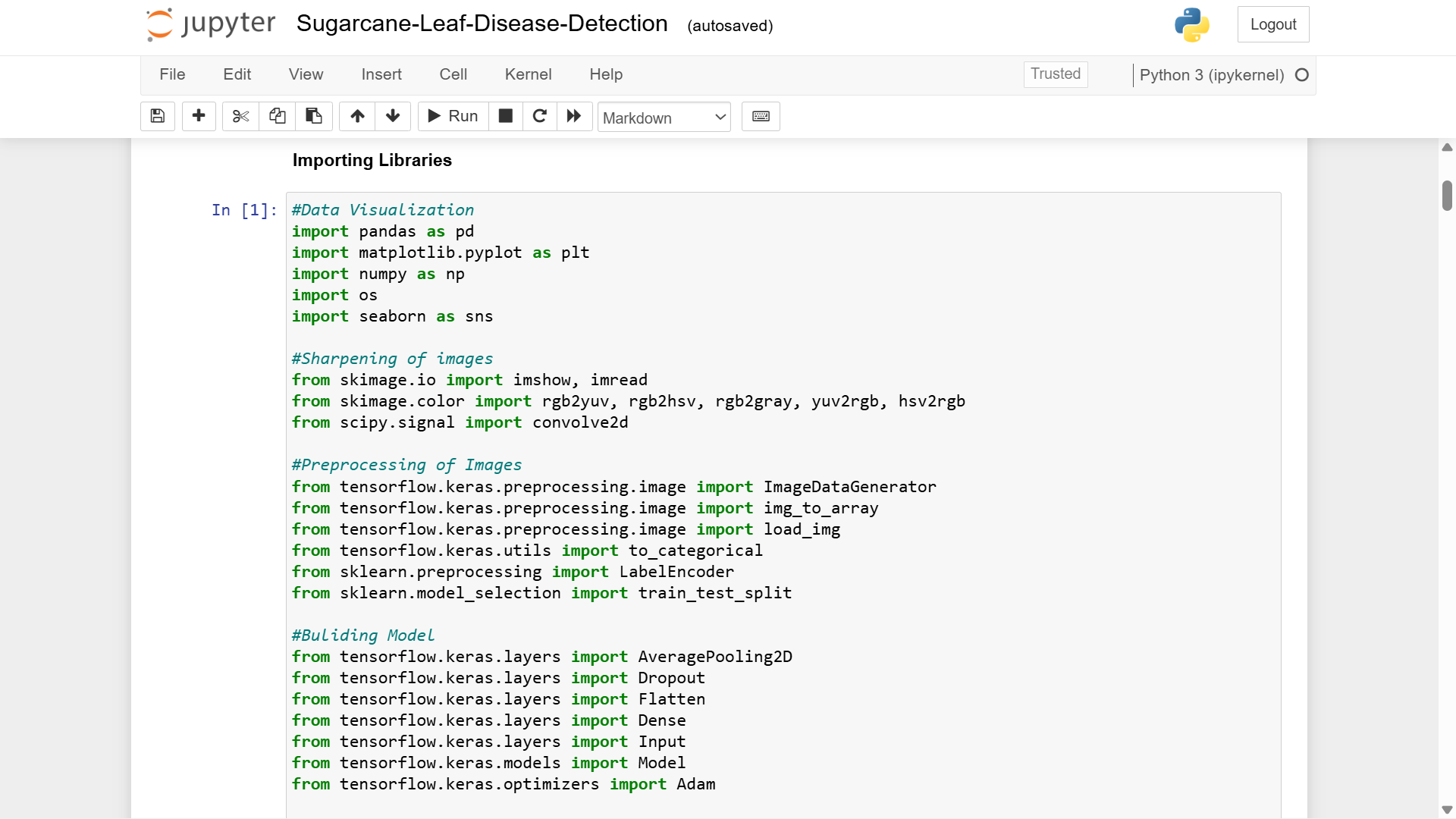
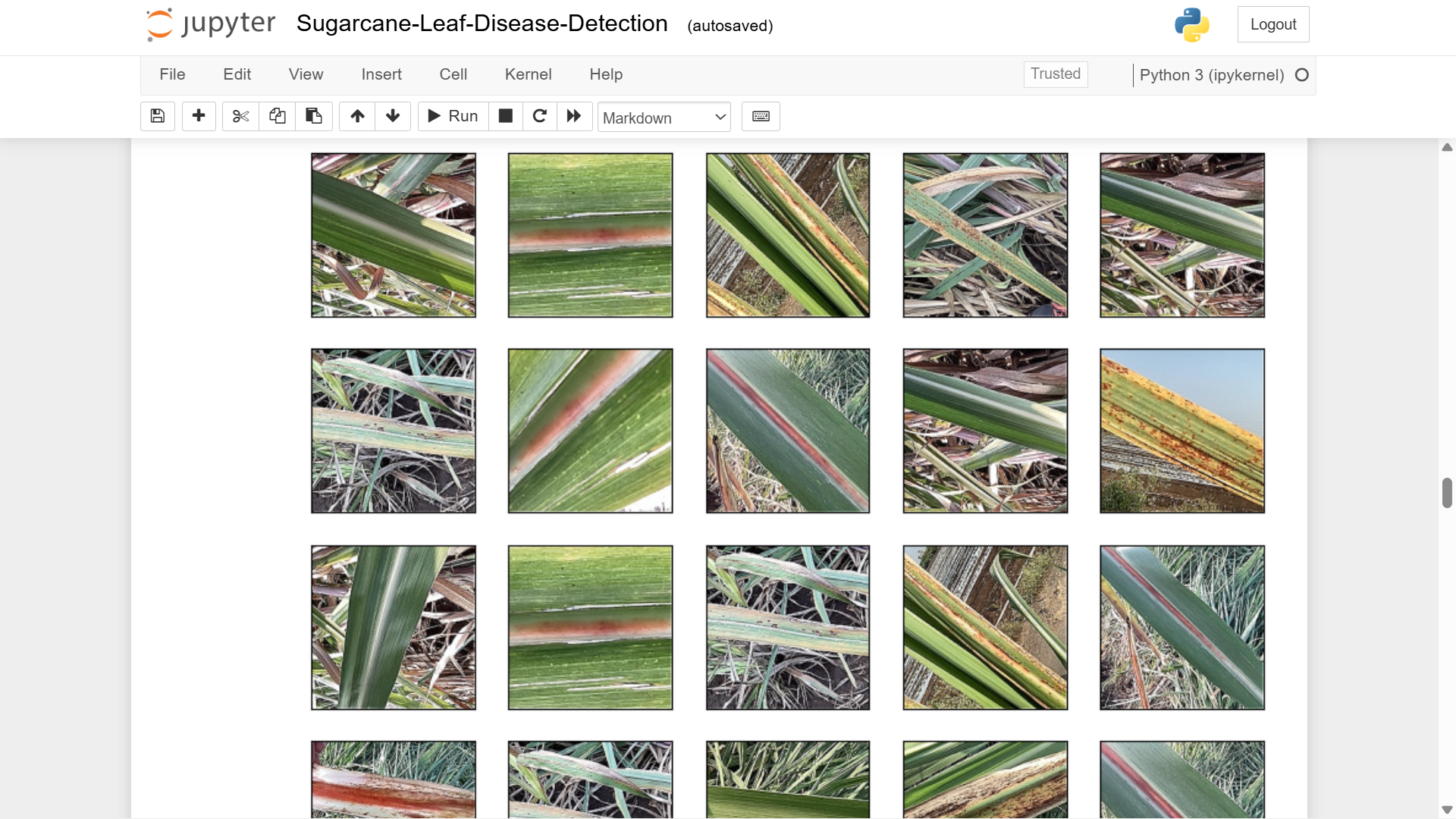
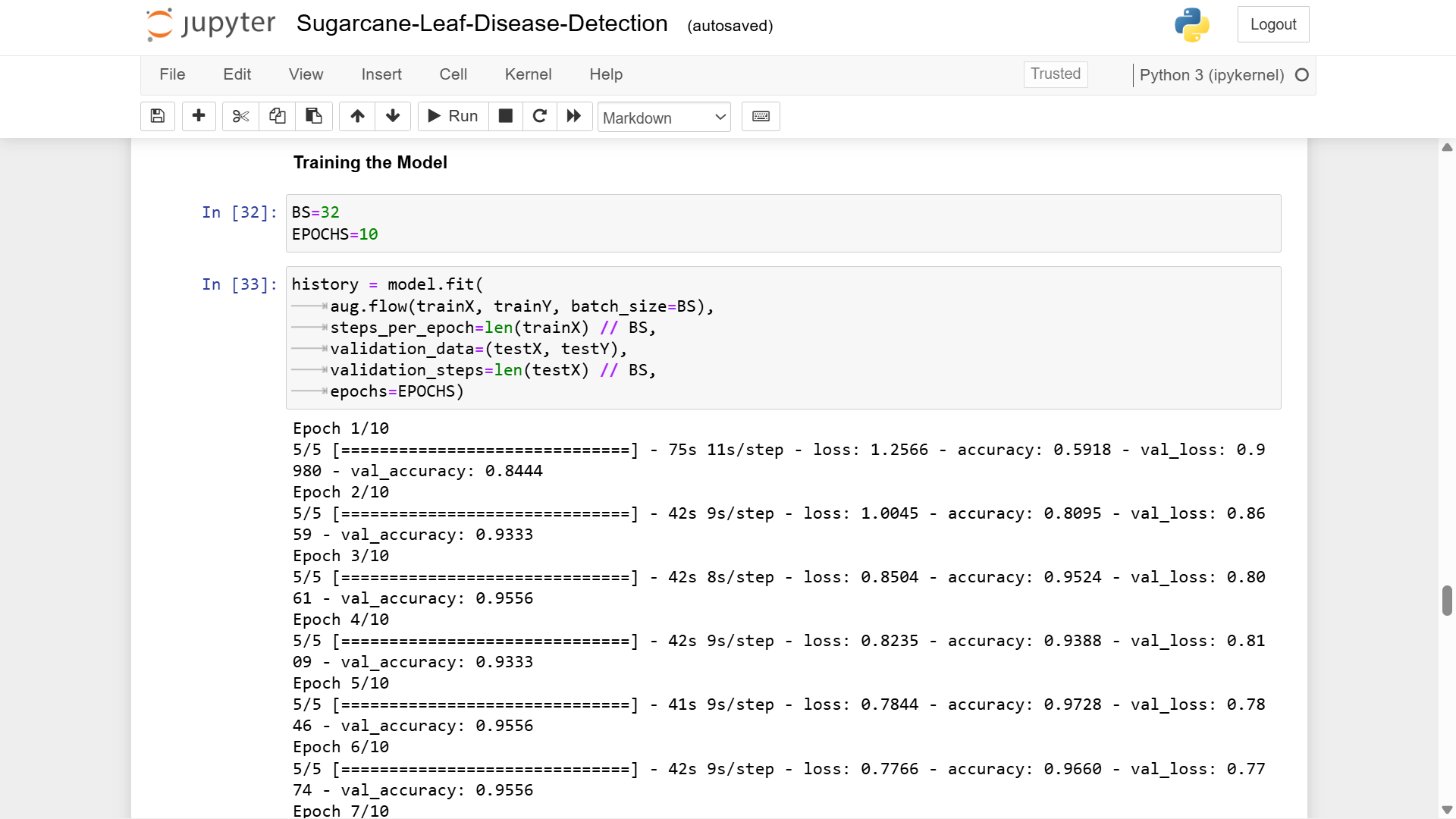
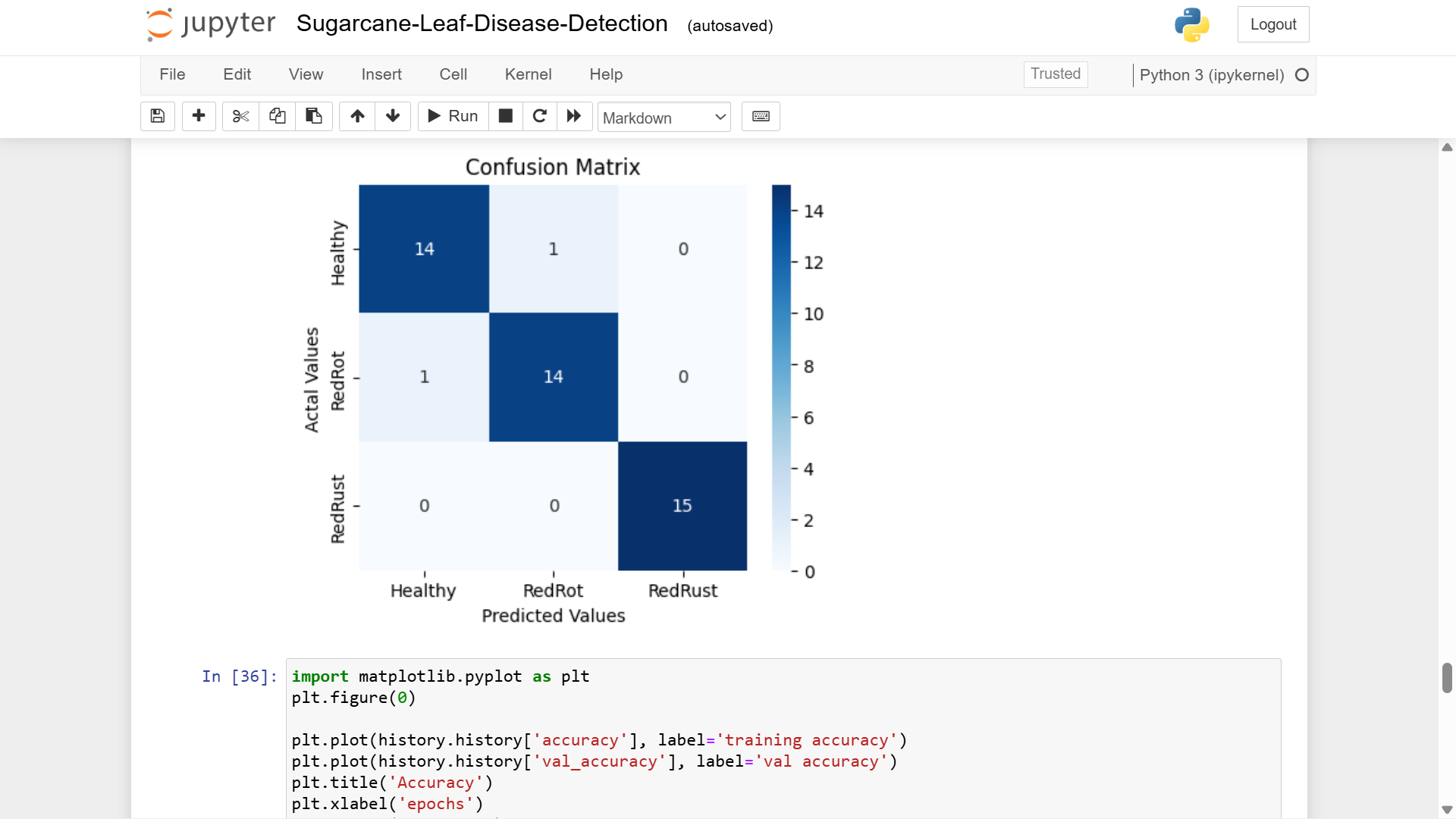
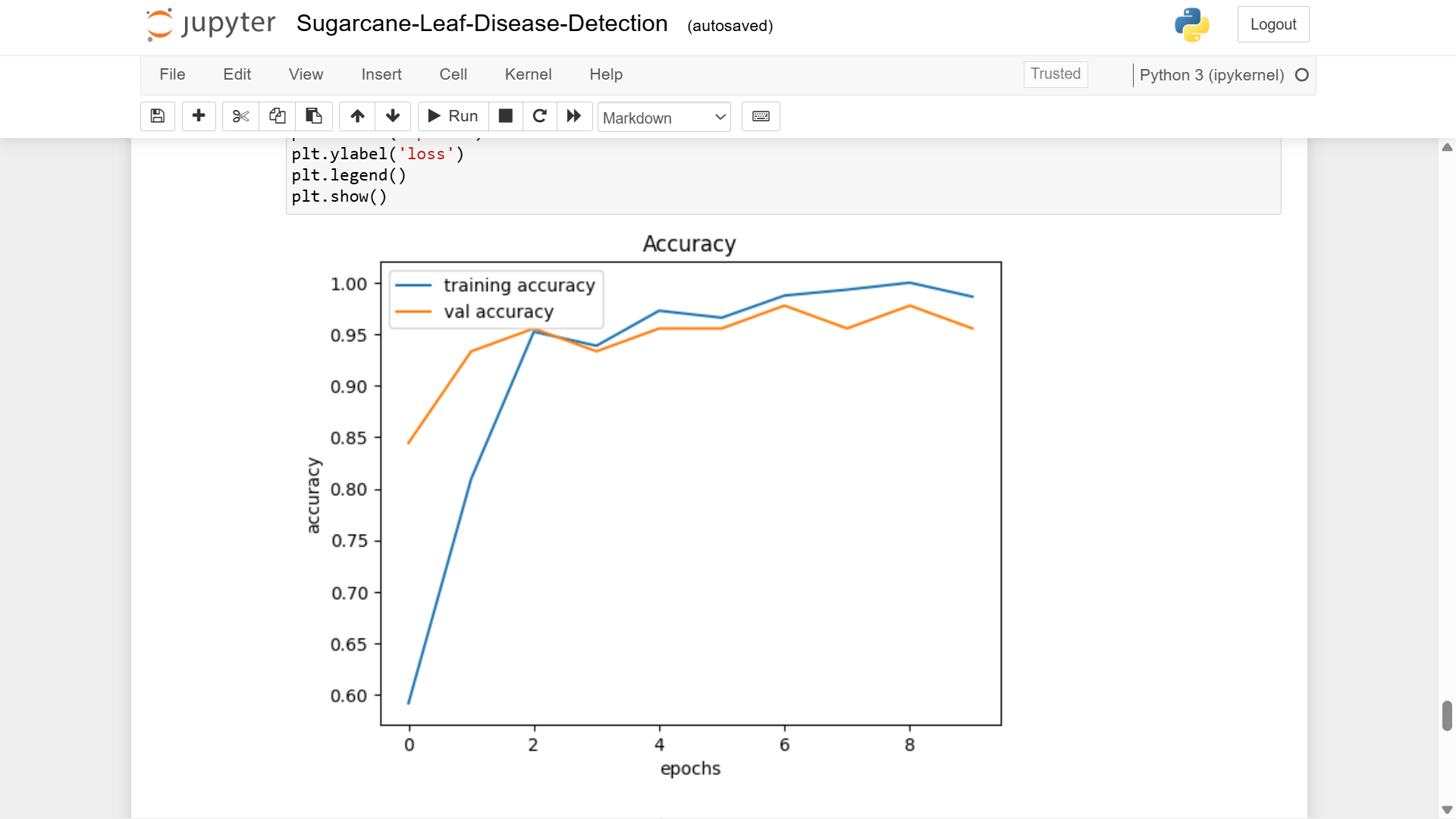
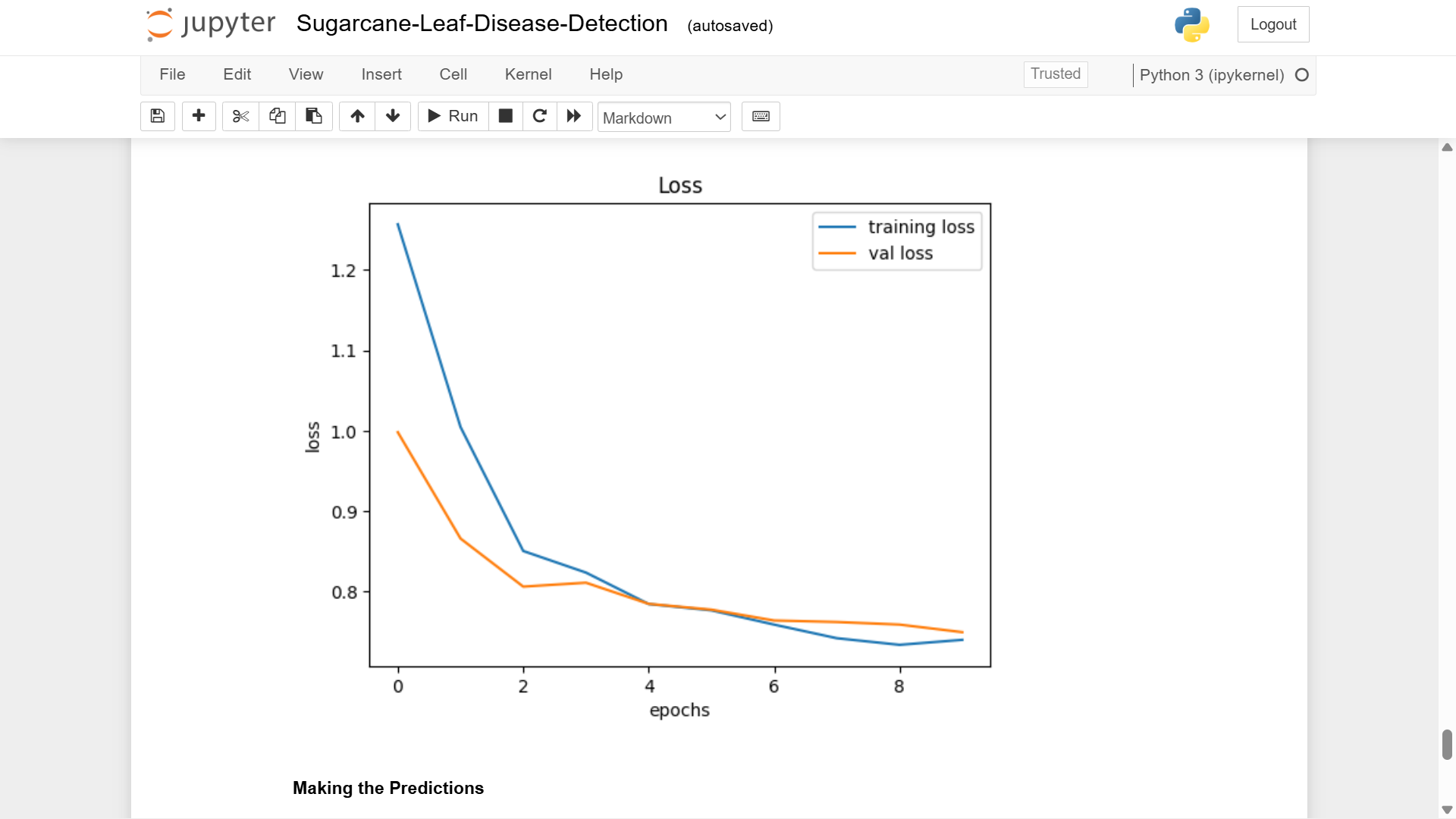
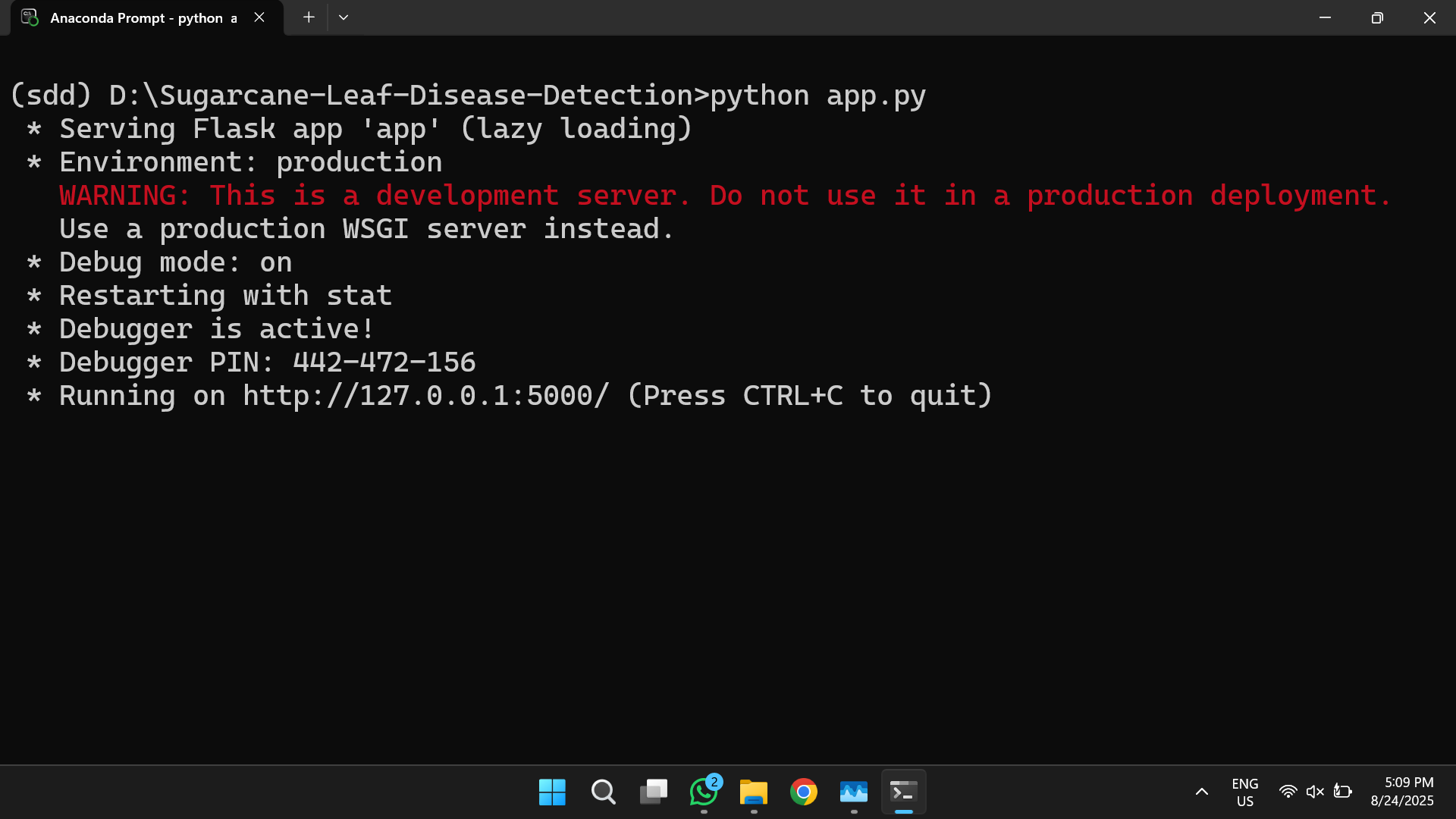
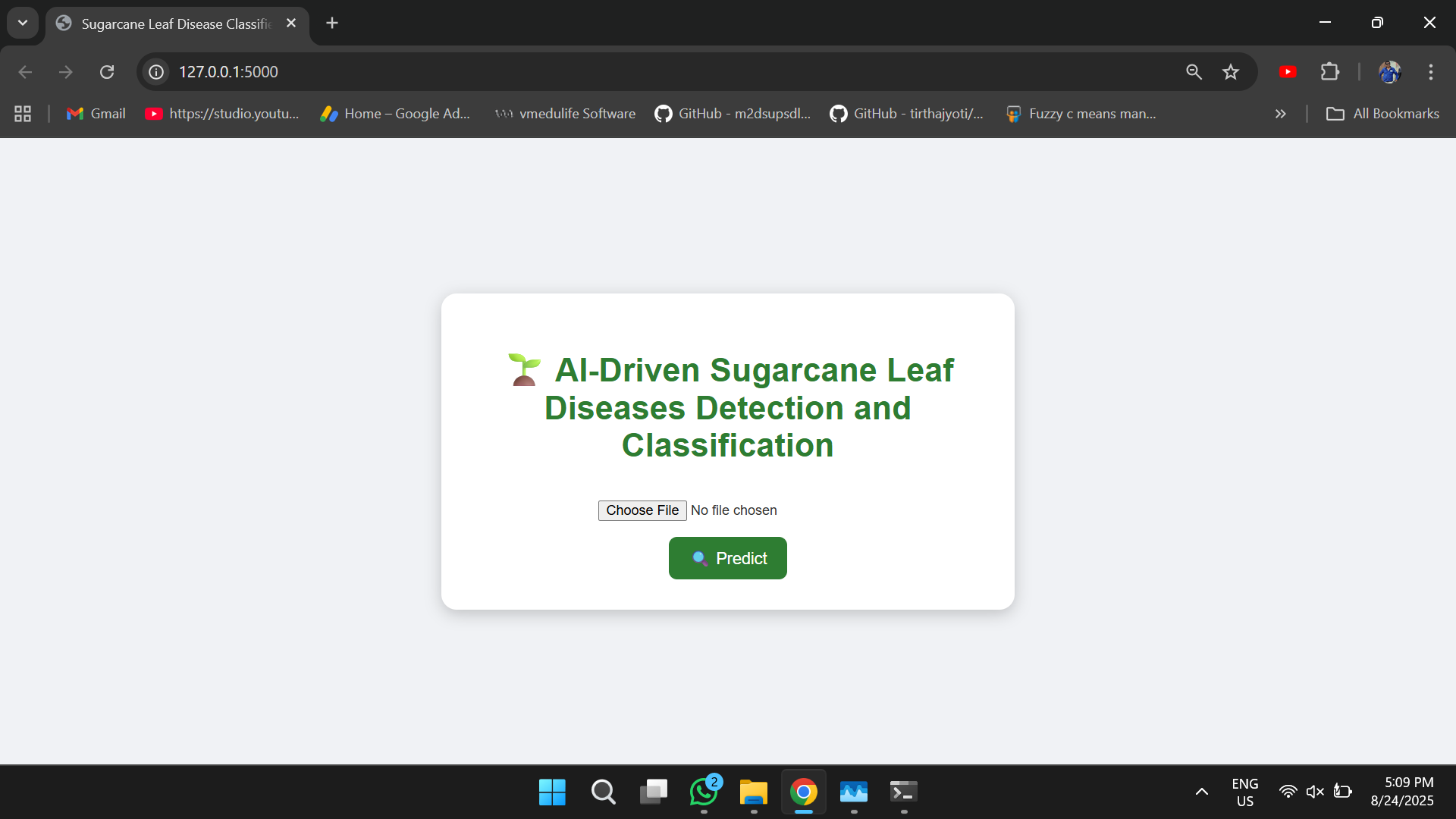
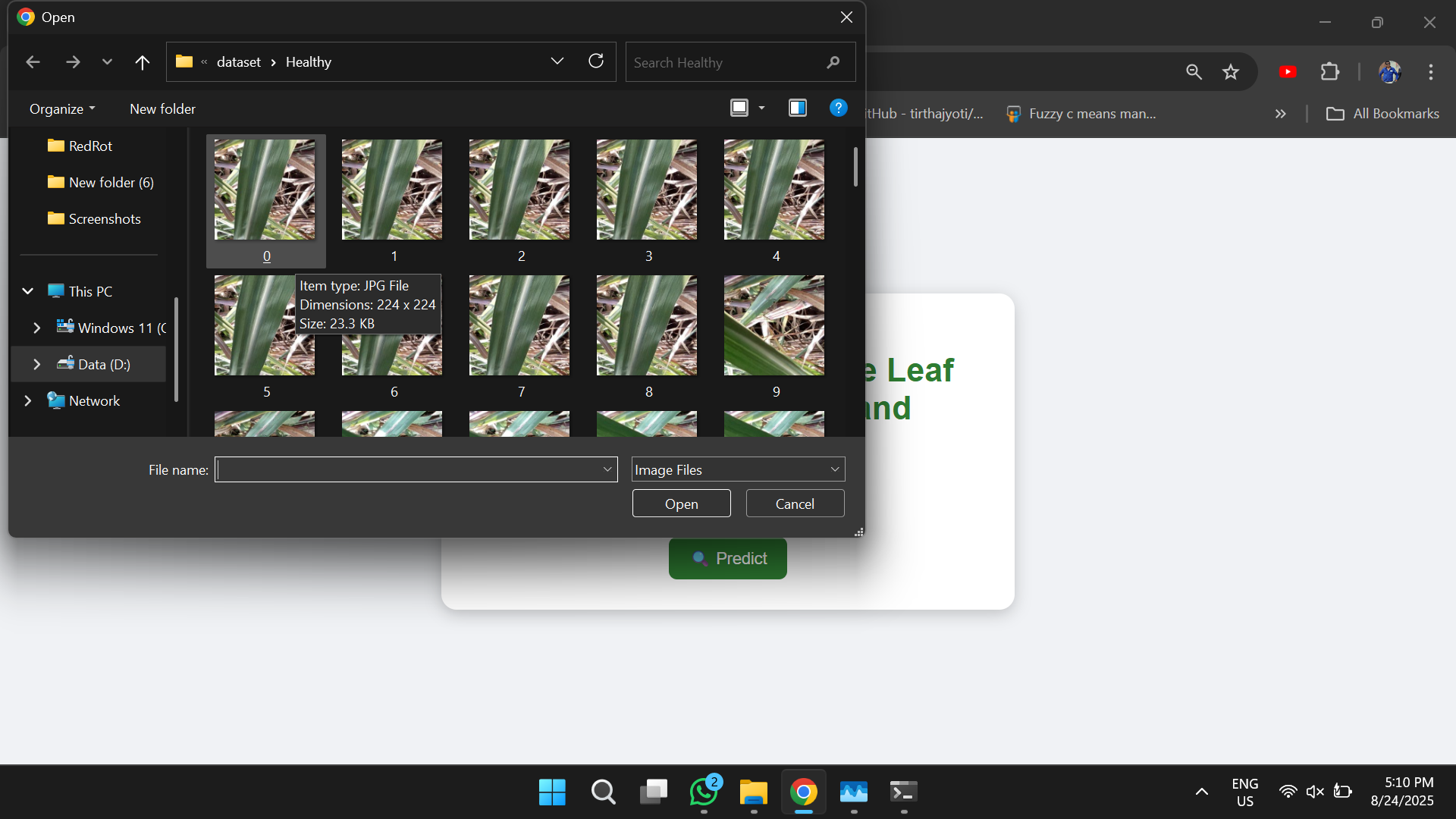
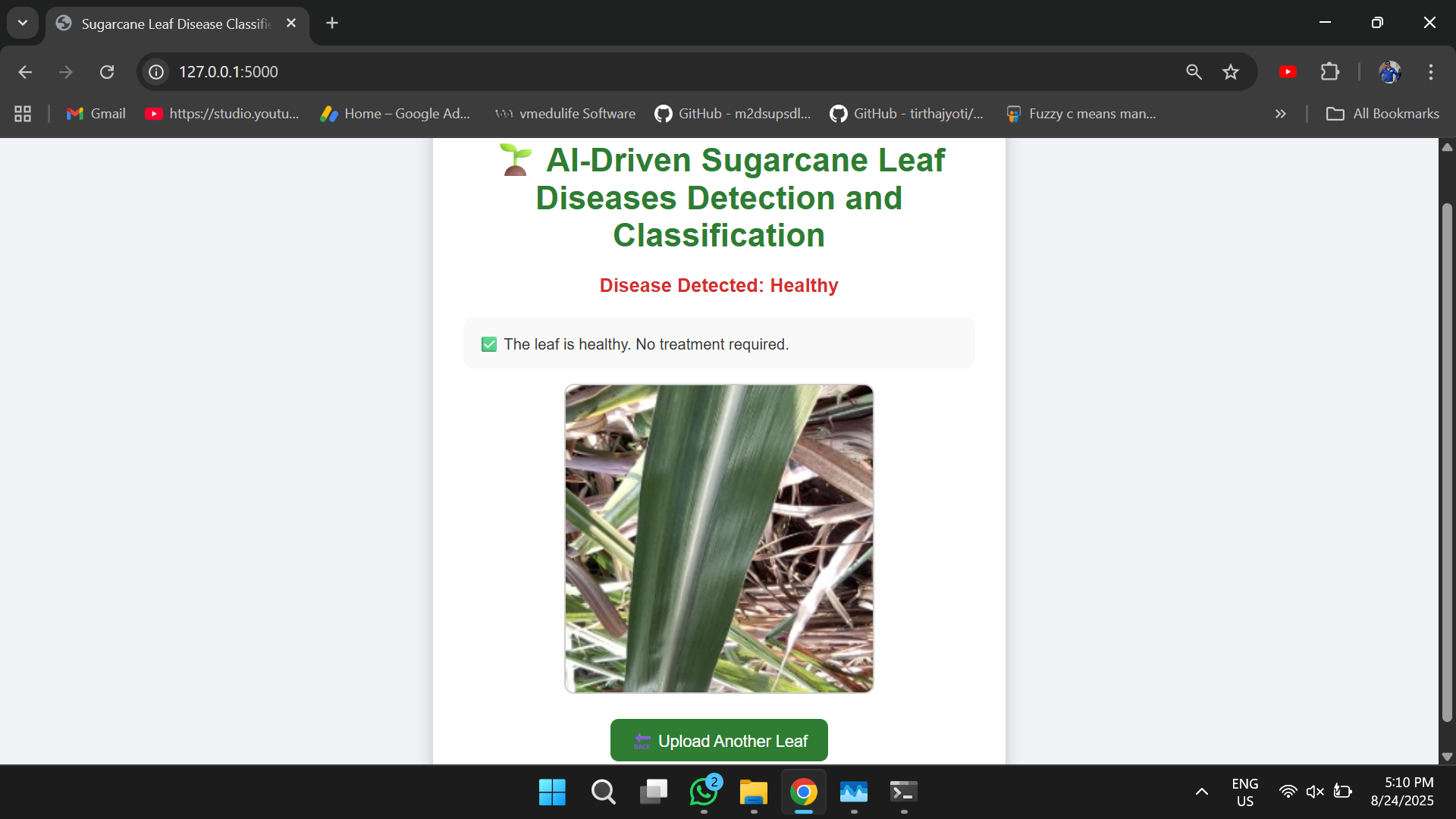
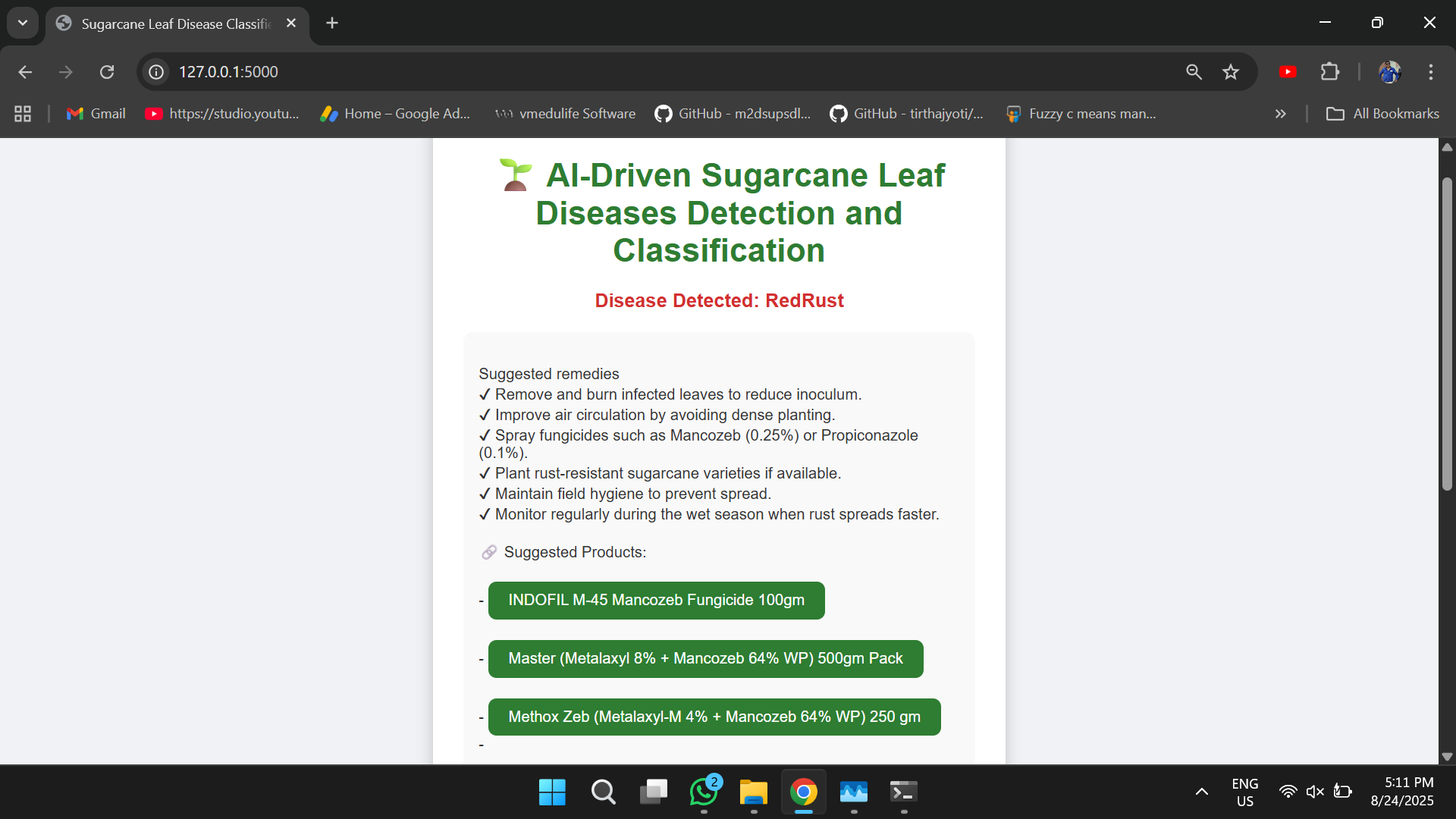
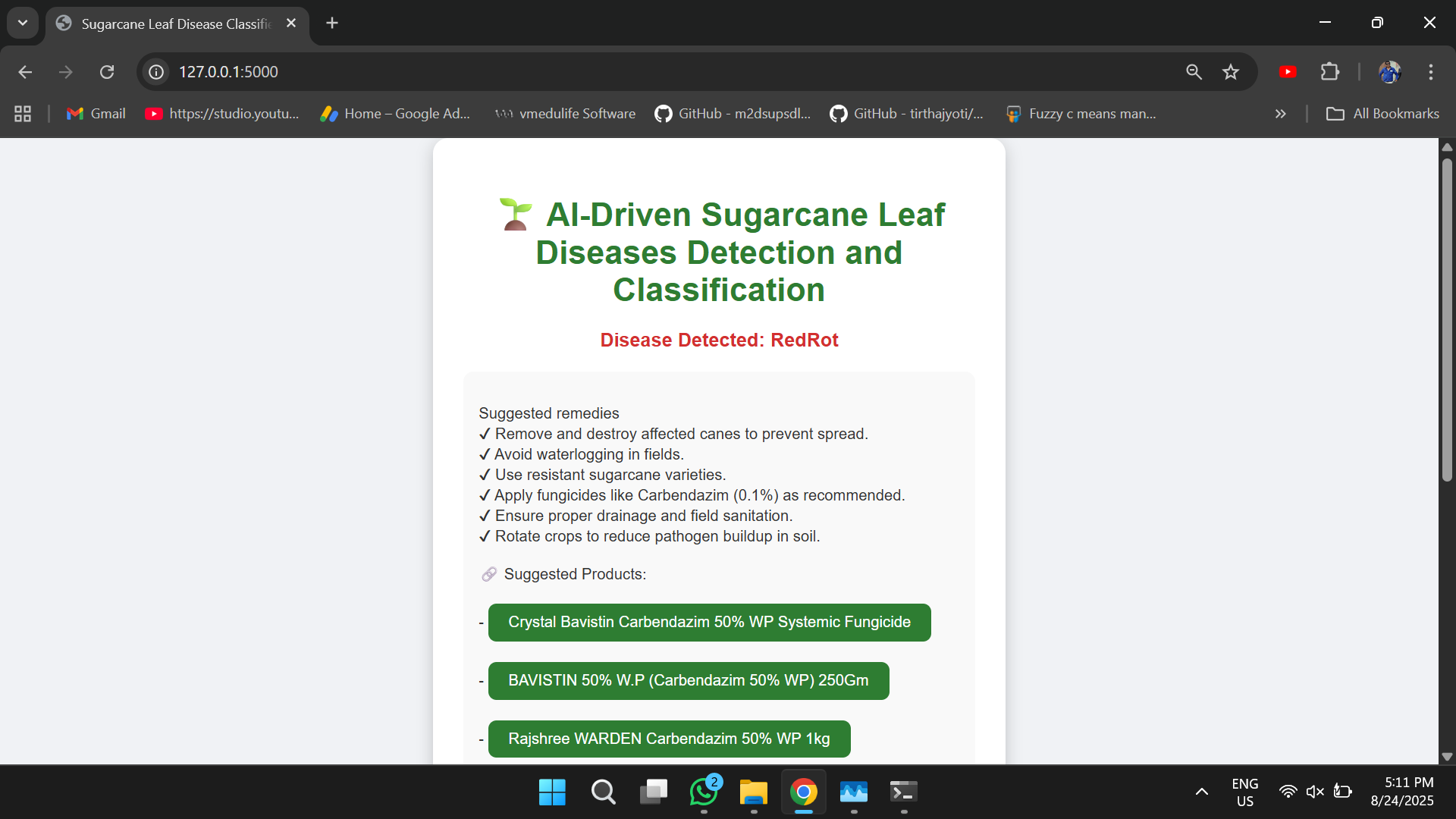



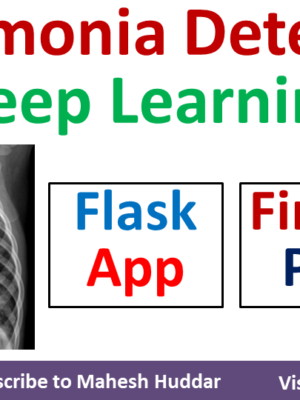
Reviews
There are no reviews yet.